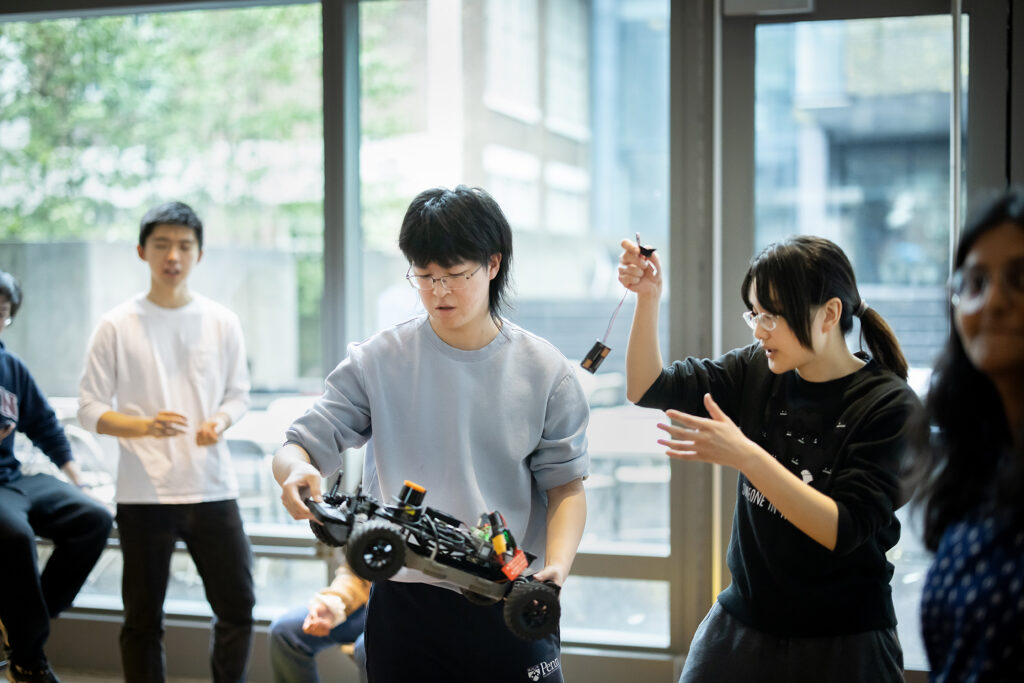
For most engineering classes, the final day is reserved for an exam. It’s a way for students to test their understanding of the key concepts by putting pen to paper, solving complex problems by applying the formulas they spent months committing to memory.
Rahul Mangharam in the School of Engineering and Applied Science has a different approach: “I like to test their skills by making them race.”
Not a foot race, he clarifies with a chuckle, but one with autonomous vehicles. In his class, students are graded on the design, assembly, and programming of self-driving cars that compete against each other in races.
These vehicles, which are about one-tenth of the size of a regular Formula 1 car—hence the name F1TENTH—are equipped with high-tech sensors and software the students need to code that allows the cars to navigate the track on their own at speeds of up to 40 miles per hour.
“You need to think of the cars as integrated complex systems that work together to make them move,” says Mangharam, a professor in the Departments of Electrical and Systems Engineering and Computer and Information Science. “I put the students into teams where different people work on different parts of the larger system, and then those teams compete to see who has the best performing car for their grade. It’s a lot of fun—we say it’s 10 times the fun at a tenth the size—but it’s also such a nice way for these budding engineers to truly put their solutions to the test.”
The students engage with a system that combines graphics processing units, Light Detection and Ranging (LIDAR), cameras, and other sensors, to teach the car to use that information to literally keep it on track.
This story was written by Nathi Magubane. To read the full article, please visit Penn Today.
